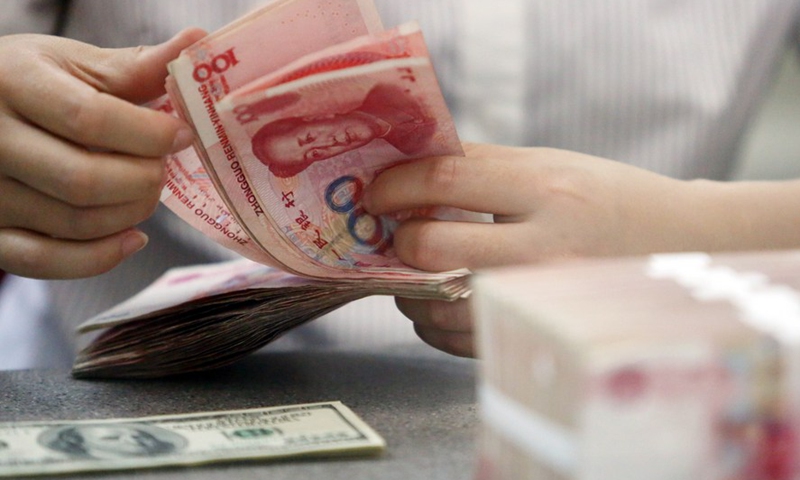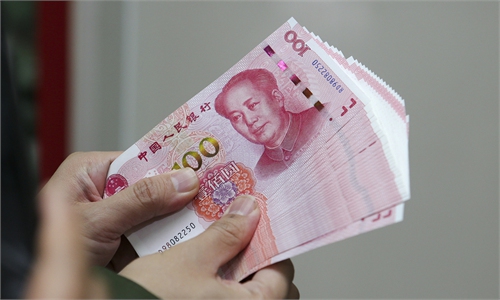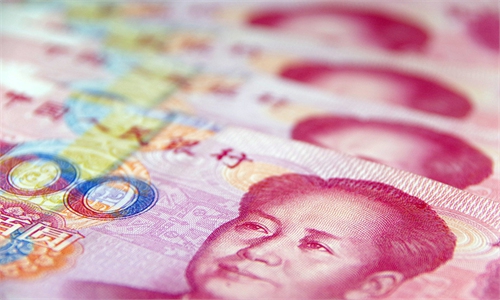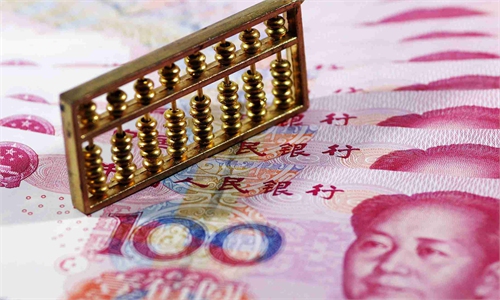Yuan internationalization helps stabilize global industry and supply chains, but doesn't aim to replace the US dollar’s global role: scholar

File photo shows a worker counts Chinese currency Renminbi (RMB) at a bank in Linyi, east China's Shandong Province. (Xinhua/Zhang Chunlei)
China’s drive to internationalize its currency yuan isn’t aimed at replacing the US dollar’s global role, but to maintain the stability of global industry and supply chains, Huang Qifan, an academic counselor of the China Finance 40 Forum (CF40) and the former mayor of Southwest China's Chongqing Municipality, said at a business forum on Thursday.As economic globalization deepens and China continues to open further, the breadth and depth of China's engagement with the world will expand, Huang said at the sixth Bund Summit jointly organized by CF40 and China Center for International Economic Exchanges (CCIEE) in Shanghai.
The yuan is increasingly being accepted by more economies and market players, driving its internationalization. However, this should not be taken to mean that the yuan will replace the US dollar’s global standing, Huang noted.
Currencies can be broadly divided into three categories: the first is the US dollar, which serves as the world’s major reserve currency. The US accounts for about 25 percent of global GDP, yet nearly 50 percent of international payments are priced and settled in the US dollars. The dollar also makes up close to 60 percent of global foreign exchange reserves, Huang explained.
The second category includes the euro, British pound, and Japanese yen, whose corresponding economies have a global market share roughly aligned with the proportion of these currencies in global transactions. The third category consists of other economies, whose currencies hold a far lower status than their GDP share in the world economy, he said.
China is now the world’s second-largest economy, with its GDP accounting for around 17 percent of the global total in 2023. However, the yuan’s share in global payment and settlement is only around 4 percent, and as a reserve currency, it accounts for just over 2 percent of the total, Huang said, noting that in the future, the internationalization of the yuan must at least reach a level comparable to the euro, British pound, and Japanese yen, reflecting China’s share in the global economy.
“It needs to point out that the internationalization of the yuan is an inevitable choice driven by China’s increasingly open economic development and is necessary to maintain the stability of global industrial and supply chains,” he said.
For China to become a financial powerhouse, it must develop a strong currency, Huang said.
However, a strong currency must align with the stage of the economic development and serve the real economy, rather than becoming a tool for cultivating asset bubbles, wealth extraction from other countries, or frequent sanctions against other nations, he said.
Global Times



